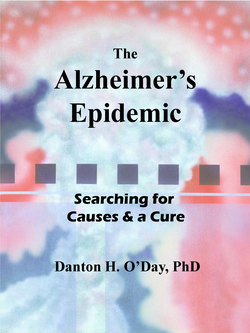Читать книгу The Alzheimer's Epidemic - Danton O'Day - Страница 8
На сайте Литреса книга снята с продажи.
Three Types of Alzheimer’s Disease
ОглавлениеThe two major delineations of Alzheimer’s disease are based on when the symptoms of the disease appear while the third is due to a chromosomal defect (Figure 1.1). The predominant form of Alzheimer’s disease occurs in people after the age of 65. It is called late-onset Alzheimer’s disease or LOAD, an acronym used by workers in the field. A smaller proportion of sufferers fall into the category of early-onset Alzheimer’s disease, which some refer to as EOAD. In other words, early-onset sufferers are people who get Alzheimer’s prior to age 65 and typically at a much younger age. The early-onset cohort has allowed researchers to find certain genes that are linked to the disease, as detailed in Chapter 12. The early-onset form of the disease contributes to about 10–15% of Alzheimer’s cases and usually begins in one’s 50s or 60s but can occur earlier in life. The third group of Alzheimer’s disease individuals comes from those with Down syndrome. Down syndrome individuals develop Alzheimer’s at a comparatively early age: symptoms often appear around the mid-40s, with the average age of diagnosis being in the mid-50s. Just as important, the disease progresses rapidly in those with the syndrome.
Figure 1.1. The three main categories of Alzheimer’s disease.
While there is a clear genetic basis for the onset of Alzheimer’s disease in Down syndrome persons, as clarified in Chapter 12, this can’t be used to explain the late- or early-onset forms of the disease that occur in non-Down-syndrome individuals. The bottom line is, while each form of the disease can provide insight, they are fundamentally different. To add to this complexity, the signs and symptoms of Alzheimer’s disease vary markedly from person to person. This has prompted some researchers to argue Alzheimer’s is not a disease but a syndrome. In this volume we will cover all forms of the disease with a primary focus on late-onset Alzheimer’s disease because it is the cause of the largest number of cases of the disease—it is the primary cause of the Alzheimer’s epidemic.
